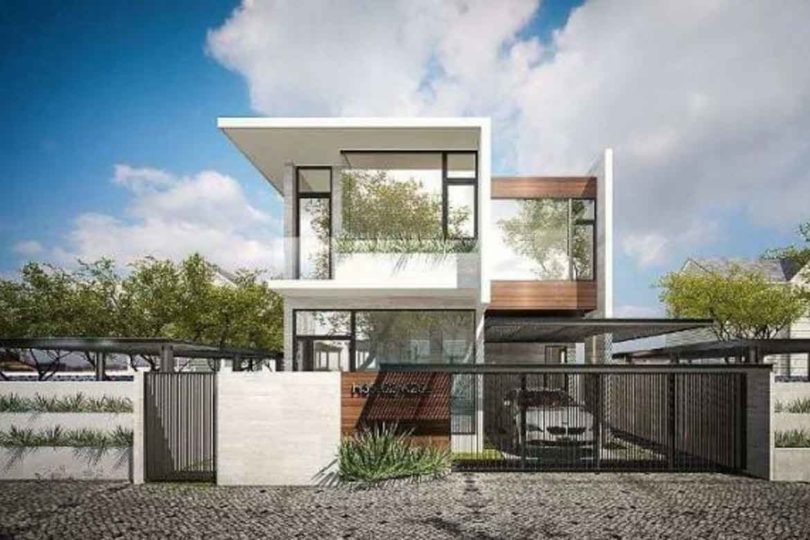What is Minimalist House Design?

Minimalist house design is an architectural and design approach that emphasizes simplicity, functionality, and a lack of unnecessary elements. The core idea behind minimalist design is to create spaces that are uncluttered, efficient, and easy to maintain, while also promoting a sense of calmness and well-being. In the context of residential design, minimalism often involves using clean lines, minimal ornamentation, and an emphasis on natural materials and light.
What is Cradle to Cradle Certification?
Cradle to Cradle certification is a rigorous standard for designing and manufacturing products and systems that are safe, circular, and sustainable. The Cradle to Cradle Products Innovation Institute, a non-profit organization, administers the certification program, which assesses products based on five criteria: material health, material reuse, renewable energy, water stewardship, and social fairness. Cradle to Cradle certification is considered the gold standard for sustainable design, and it has been widely adopted in various industries, including architecture, product design, and manufacturing.
Benefits of Minimalist House Design for Cradle to Cradle-Certified Homes
When combined with Cradle to Cradle certification, minimalist house design offers numerous benefits, including:
- Reduced environmental impact: By using natural materials, minimizing waste, and optimizing energy efficiency, minimalist homes can significantly reduce their carbon footprint and contribute to a more sustainable future.
- Improved indoor air quality: Minimalist design often incorporates natural ventilation, non-toxic materials, and ample natural light, creating healthier indoor environments for occupants.
- Lower maintenance costs: With fewer components and a focus on durability, minimalist homes require less maintenance and repair, reducing costs and extending the lifespan of the building.
- Increased flexibility: Minimalist design can be easily adapted to changing needs and lifestyles, making it an ideal choice for homeowners who value versatility and flexibility.
- Enhanced aesthetic appeal: The clean lines, simple forms, and emphasis on natural materials in minimalist design create a unique and timeless aesthetic that can appreciate over time.
Key Elements of Minimalist House Design for Cradle to Cradle-Certified Homes
To achieve a minimalist design that meets Cradle to Cradle certification standards, several key elements must be incorporated:
- Natural materials: Using natural, locally sourced materials, such as wood, stone, and low-carbon concrete, can significantly reduce the environmental impact of the building.
- Passive design: Incorporating passive design strategies, such as orientation, insulation, and natural ventilation, can minimize the need for mechanical systems and reduce energy consumption.
- Energy-efficient systems: Implementing energy-efficient systems, such as solar panels, heat pumps, and energy-recovery ventilation, can further reduce the home’s carbon footprint.
- Water conservation: Incorporating water-conserving measures, such as low-flow fixtures and greywater systems, can minimize water waste and reduce the strain on local water resources.
- Material optimization: Selecting materials that are recyclable, reusable, or biodegradable can minimize waste and support a circular economy.
Design Principles for Minimalist Cradle to Cradle-Certified Homes
To create a minimalist Cradle to Cradle-certified home, the following design principles should be applied:
- Simplicity: Emphasize simplicity in form, function, and materiality to reduce waste and environmental impact.
- Functionality: Design spaces that are functional, efficient, and adaptable to changing needs and lifestyles.
- Natural light: Maximize natural light to reduce the need for artificial lighting and create a sense of well-being.
- Ventilation: Incorporate natural ventilation strategies to improve indoor air quality and reduce the need for mechanical systems.
- Materiality: Select materials that are natural, sustainable, and non-toxic to minimize environmental harm and promote occupant health.
FAQs
- What is the cost of designing a minimalist Cradle to Cradle-certified home?
The cost of designing a minimalist Cradle to Cradle-certified home can vary depending on factors such as location, size, and materials. However, the long-term benefits of reduced maintenance costs, energy efficiency, and improved indoor air quality can offset the initial investment. - Can a minimalist Cradle to Cradle-certified home be customized to meet individual needs?
Yes, minimalist design can be easily adapted to meet individual needs and lifestyles. The key is to prioritize functionality, simplicity, and sustainability while incorporating personalized touches and features. - How can I ensure that my minimalist Cradle to Cradle-certified home is energy-efficient?
To ensure energy efficiency, incorporate passive design strategies, such as orientation and insulation, and implement energy-efficient systems, such as solar panels and energy-recovery ventilation. - What materials are suitable for a minimalist Cradle to Cradle-certified home?
Suitable materials include natural, locally sourced materials, such as wood, stone, and low-carbon concrete, as well as recyclable, reusable, or biodegradable materials. - Can a minimalist Cradle to Cradle-certified home be built using conventional construction methods?
While conventional construction methods can be used, it is recommended to incorporate innovative, sustainable construction techniques, such as prefabricated modules or 3D printing, to minimize waste and environmental impact.
Conclusion
Minimalist house design for Cradle to Cradle-certified homes offers a unique opportunity to create living spaces that are not only aesthetically pleasing but also environmentally sustainable and healthy. By incorporating key elements, such as natural materials, passive design, and energy-efficient systems, and applying design principles, such as simplicity, functionality, and materiality, homeowners can create a haven that supports their well-being and the well-being of the planet. As the demand for sustainable and eco-friendly design continues to grow, the combination of minimalist design and Cradle to Cradle certification is poised to play a significant role in shaping the future of residential design.
Closure
Thus, we hope this article has provided valuable insights into Minimalist house design for Cradle to Cradle-certified homes. We hope you find this article informative and beneficial. See you in our next article!